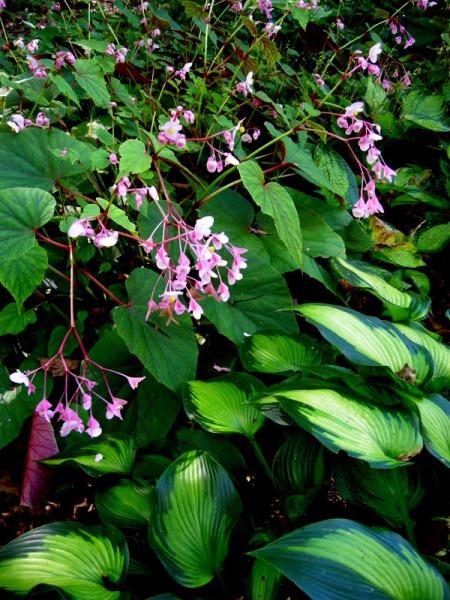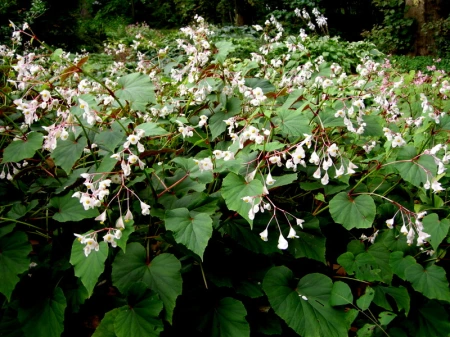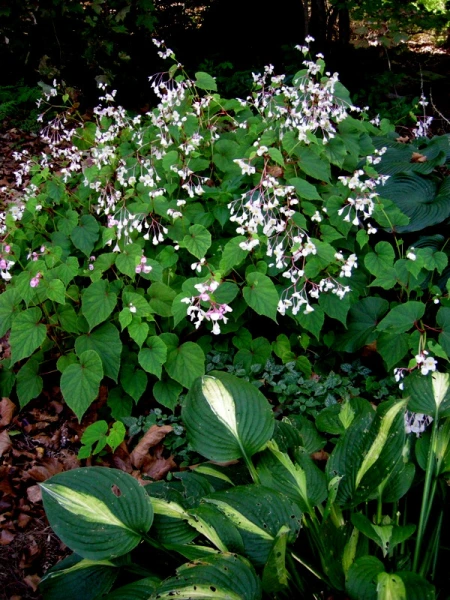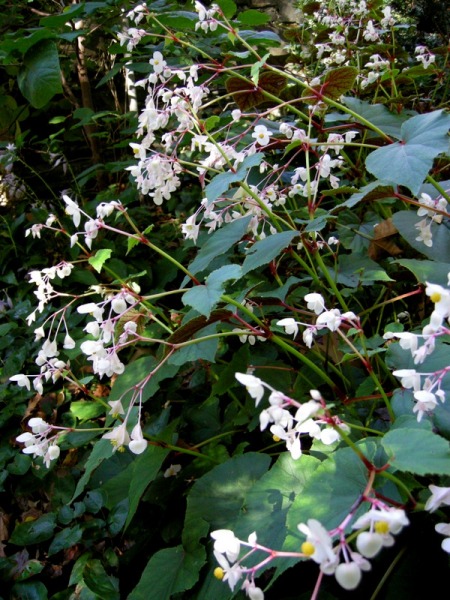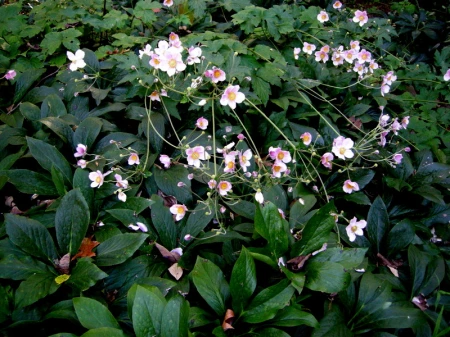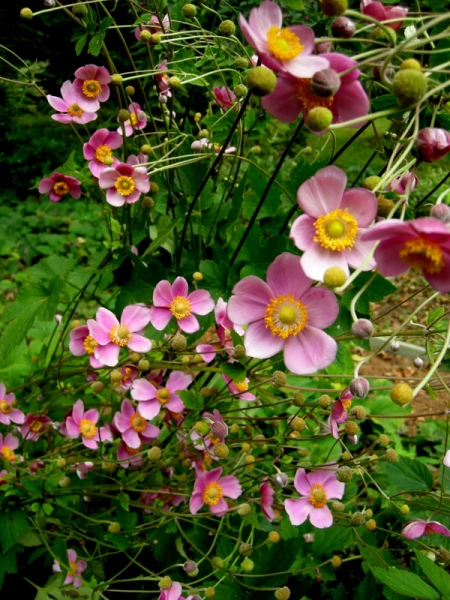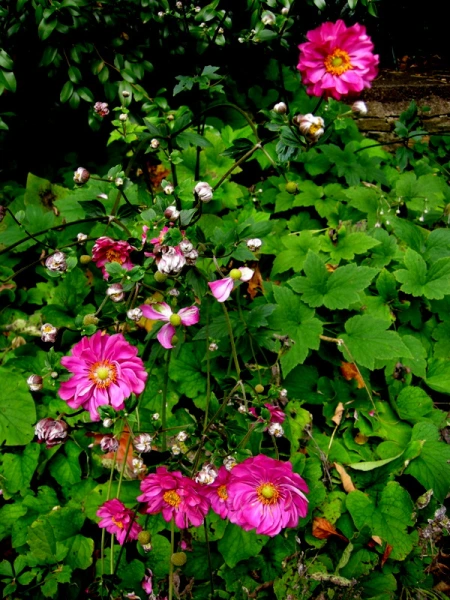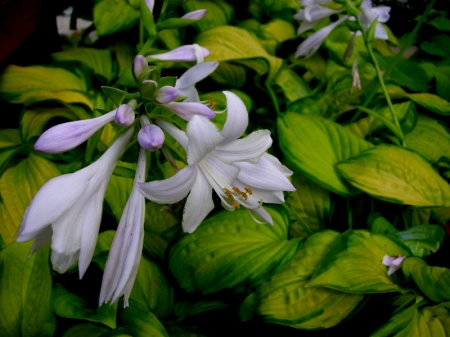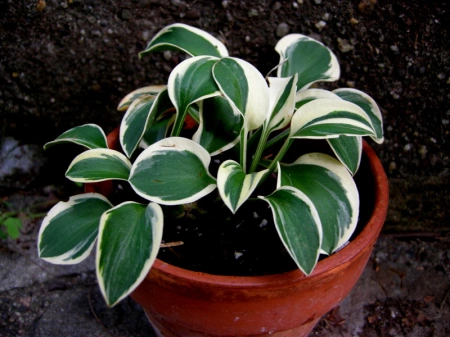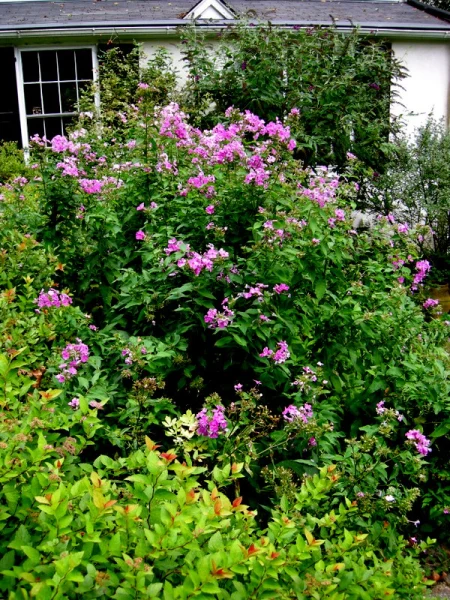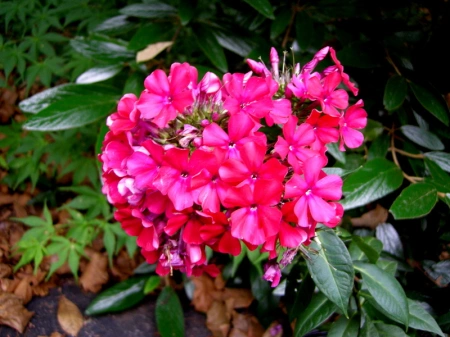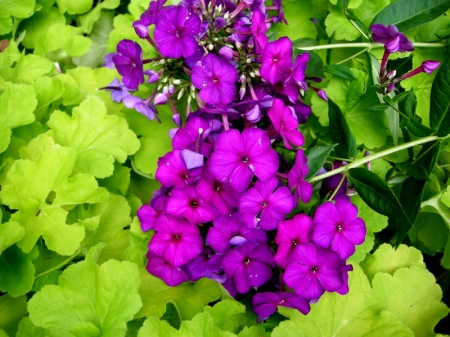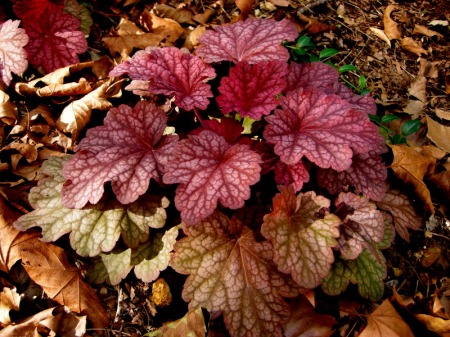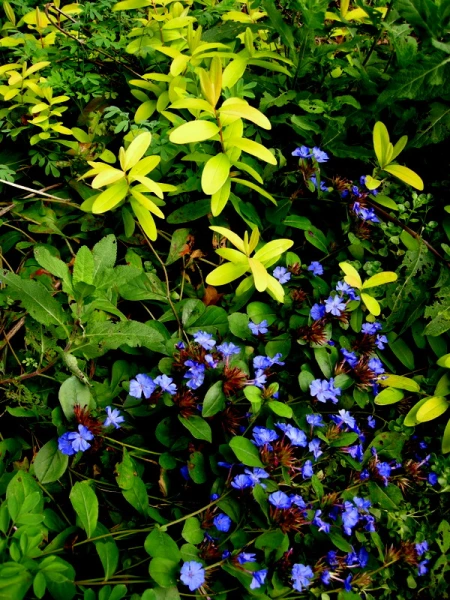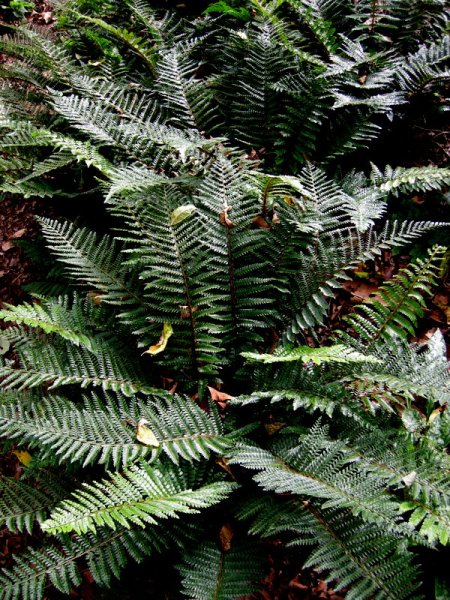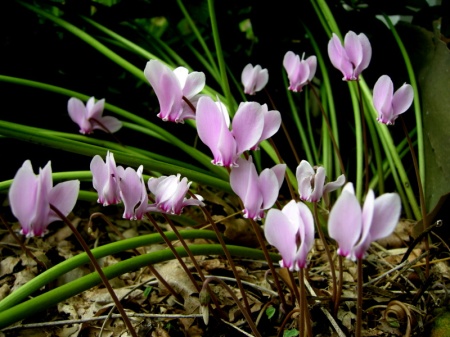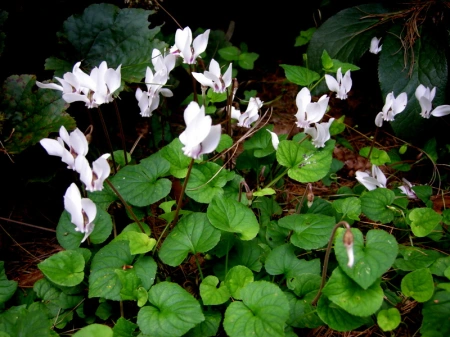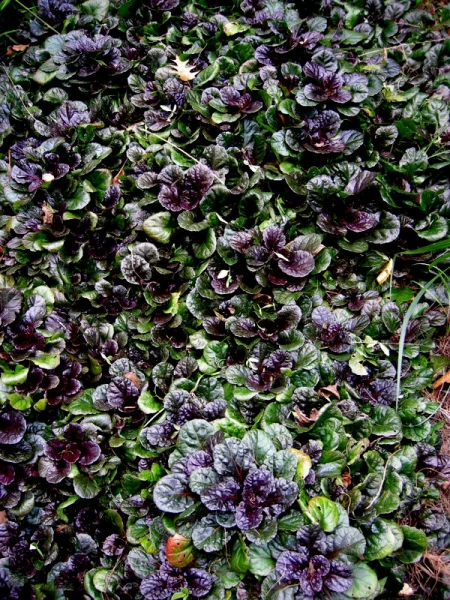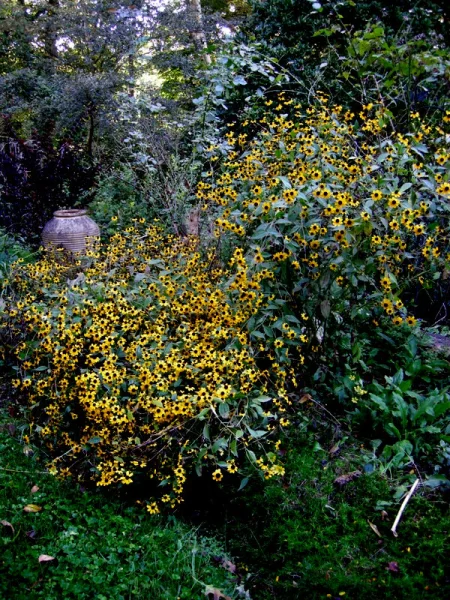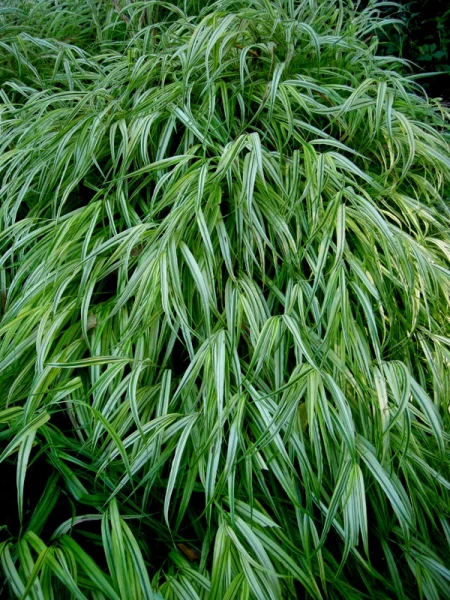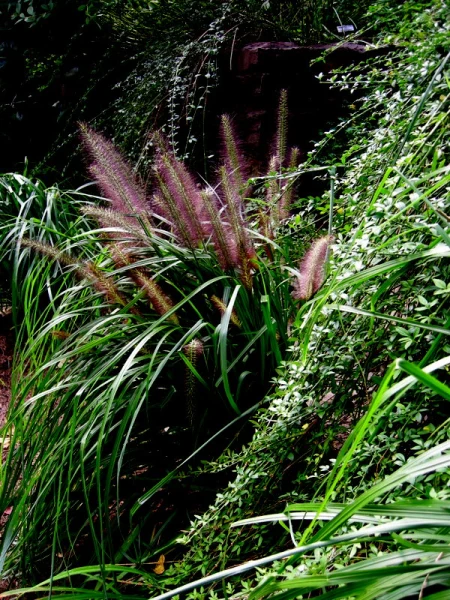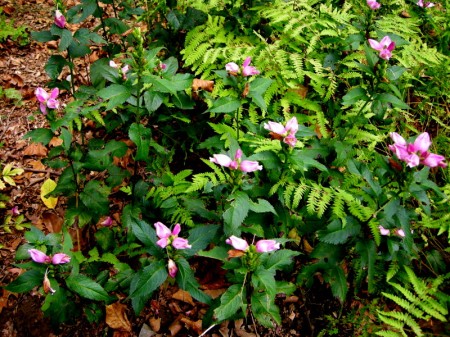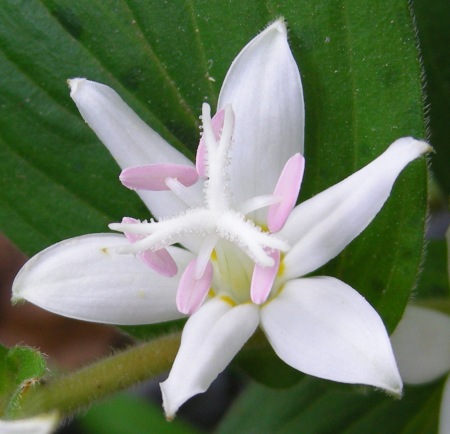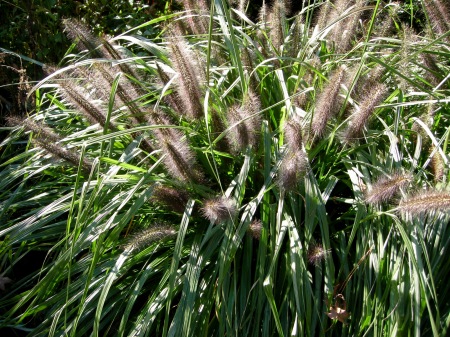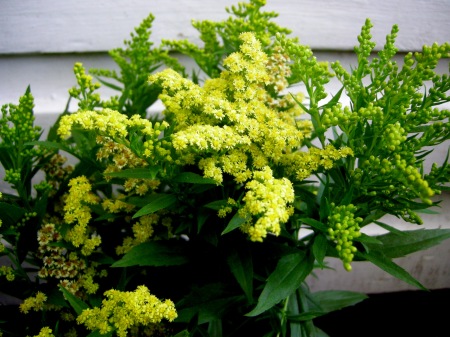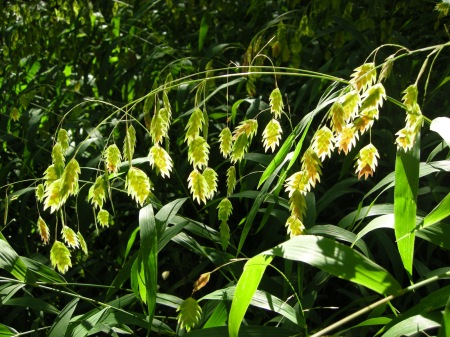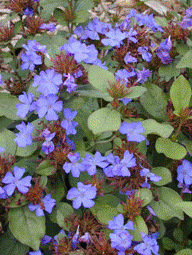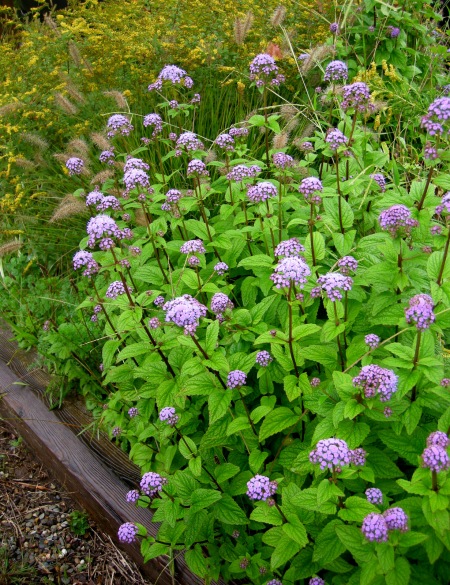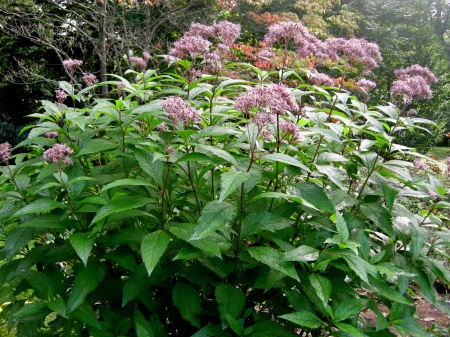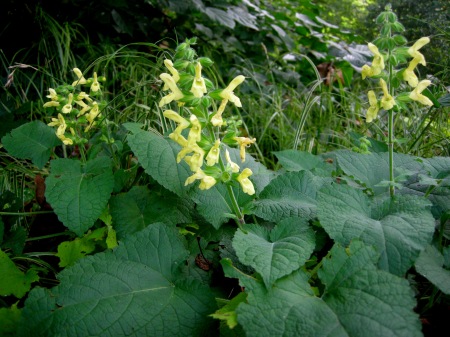 Hosta ‘Blueberry Cobbler’ is beautiful when it blooms in September.
Hosta ‘Blueberry Cobbler’ is beautiful when it blooms in September.
As I said in my last post featuring two glorious fall gardens, there is no area of Carolyn’s Shade Gardens planted to peak now. However, I have many beautiful fall-blooming plants, and the gardens are quite pretty in fall. These perennials and shrubs make a daily walk through the property worthwhile even as the weather cools. In this post I will show you what plants you can add to your garden to extend your blooms through September. The next post will feature plants for October, and the final post in the series will feature November.
Nursery News: Carolyn’s Shade Gardens is a retail nursery located in Bryn Mawr, PA, specializing in showy, colorful, and unusual plants for shade. The only plants that we ship are snowdrops and miniature hostas. For catalogues and announcements of events, please send your full name, location, and phone number (for back up use only) to carolyn@carolynsshadegardens.com. Click here to get to the home page of our website for catalogues and information about our nursery and to subscribe to our blog.
.
 Hosta ‘Blueberry Cobbler’ on the right and ‘Jimmy Crack Corn’ on the left. Both manage to keep their leaves pristine through the summer.
Hosta ‘Blueberry Cobbler’ on the right and ‘Jimmy Crack Corn’ on the left. Both manage to keep their leaves pristine through the summer.
.
 Yellow wax-bells, Kirengoshoma palmata, are a perennial with the presence of a shrub. The leaves add interest all season, and the unusual yellow flowers bloom in September.
Yellow wax-bells, Kirengoshoma palmata, are a perennial with the presence of a shrub. The leaves add interest all season, and the unusual yellow flowers bloom in September.
.
 I cut my native garden phlox, P. paniculata, down by half in June and have flowers into October. Here you see the bed on 9/10 in full bloom with plenty of buds coming. Today 10/21, a few flowers remain but the phlox is mostly done.
I cut my native garden phlox, P. paniculata, down by half in June and have flowers into October. Here you see the bed on 9/10 in full bloom with plenty of buds coming. Today 10/21, a few flowers remain but the phlox is mostly done.
.
 The phlox starts with white at one end of the bed and progresses through many shades to dark pink at the other. This native plant is great for butterflies, bees, and all kinds of native insects.
The phlox starts with white at one end of the bed and progresses through many shades to dark pink at the other. This native plant is great for butterflies, bees, and all kinds of native insects.
.
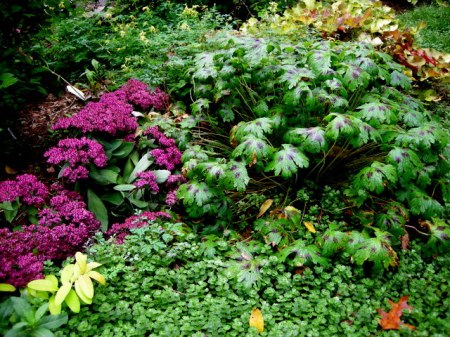 This sedum, called ‘Mr. Goodbud’, was added this year to pick up the maroon blotches on ‘Katherine Adele’ hardy geranium.
This sedum, called ‘Mr. Goodbud’, was added this year to pick up the maroon blotches on ‘Katherine Adele’ hardy geranium.
.
 No flowers here, but I love the way ‘Diana Clare’ pulmonaria and Japanese painted fern look in the fall.
No flowers here, but I love the way ‘Diana Clare’ pulmonaria and Japanese painted fern look in the fall.
.
 Native Rudbeckia triloba, ostensibly called brown-eyed Susan although I have never heard anyone use that name, with the purple leaves of ‘Delta Jazz’ crapemyrtle. This rudbeckia self-sows prolifically.
Native Rudbeckia triloba, ostensibly called brown-eyed Susan although I have never heard anyone use that name, with the purple leaves of ‘Delta Jazz’ crapemyrtle. This rudbeckia self-sows prolifically.
.
 Perennial native lobelias, both L. cardinalis (red) and L. siphilitica (blue) are very important to my garden in September, and sometimes they cross. Here you see great blue lobelia peeking out from behind a lobelia seedling. I often get white seedlings but never this amazing color.
Perennial native lobelias, both L. cardinalis (red) and L. siphilitica (blue) are very important to my garden in September, and sometimes they cross. Here you see great blue lobelia peeking out from behind a lobelia seedling. I often get white seedlings but never this amazing color.
.
 Hellbore leaves surrounded by cascading ‘Aureola’ Japanese forest grass, a wonderful fall combo.
Hellbore leaves surrounded by cascading ‘Aureola’ Japanese forest grass, a wonderful fall combo.
.
 This is a perennial that fills the role of a shrub, but I have forgotten its name. There is a close up of the flowers below. Does anyone know what it is? Note: Readers have identified this as PA native Doellingeria (formerly Aster) umbellata or flat-topped aster. Although the habit of this aster is supposed to be upright, I think mine is flopping for lack of sun. I am going to cut it back in June next year to see if I can improve its habit. However, I like it anyway because the stems don’t fall completely to the ground. For more information on this plant, click here.
This is a perennial that fills the role of a shrub, but I have forgotten its name. There is a close up of the flowers below. Does anyone know what it is? Note: Readers have identified this as PA native Doellingeria (formerly Aster) umbellata or flat-topped aster. Although the habit of this aster is supposed to be upright, I think mine is flopping for lack of sun. I am going to cut it back in June next year to see if I can improve its habit. However, I like it anyway because the stems don’t fall completely to the ground. For more information on this plant, click here.
.
 flowers of native flat-topped aster
flowers of native flat-topped aster
.
 Hosta ‘Summer Lovin’ with native spigelia leaves and ‘All Gold’ Japanese forest grass. All three look great from spring through fall, and the spigelia even rebloomed earlier this month.
Hosta ‘Summer Lovin’ with native spigelia leaves and ‘All Gold’ Japanese forest grass. All three look great from spring through fall, and the spigelia even rebloomed earlier this month.
.
 It wouldn’t be fall without hardy begonia. Not my best photo but it went by early this year after a torrential rain.
It wouldn’t be fall without hardy begonia. Not my best photo but it went by early this year after a torrential rain.
.
 This lovely clump of the white-flowered hardy begonia planted itself on the hill by the drive.
This lovely clump of the white-flowered hardy begonia planted itself on the hill by the drive.
.
 A glimpse of what is to come: ‘Honorine Joubert’ Japanese anemone starting to bloom on 9/29. It is in full bloom now.
A glimpse of what is to come: ‘Honorine Joubert’ Japanese anemone starting to bloom on 9/29. It is in full bloom now.
.
Carolyn
Nursery Happenings: You can sign up to receive notifications of catalogues, sales, and events at the nursery by sending your full name and phone number to carolynsshadegardens@verizon.net.
Carolyn’s Shade Gardens is a local retail nursery in Bryn Mawr, Pennsylvania, U.S., zone 7a. The only plants that we mail order are snowdrops and miniature hostas and only within the US.
If you are within visiting distance and would like to receive catalogues and information about customer events, please send your full name and phone number to carolynsshadegardens@verizon.net. Subscribing to my blog does not sign you up to receive this information.
Facebook: Carolyn’s Shade Gardens has a Facebook Page where I post single photos, garden tips, and other information that doesn’t fit into a blog post. You can look at my Facebook page here or click the Like button on my right sidebar here.
Notes: Every word that appears in orange on my blog is a link that you can click for more information. If you want to return to my blog’s homepage to access the sidebar information (catalogues, previous articles, etc.) or to subscribe to my blog, just click here.













